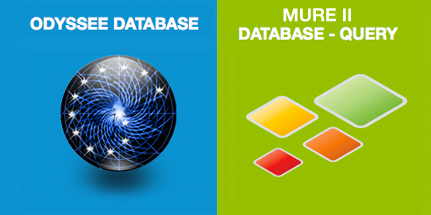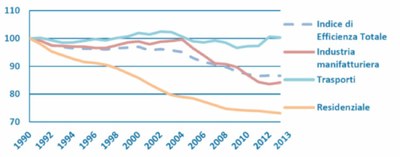ENERGY: One comprehensive database for better energy efficiency in 29 European countries
28/9/2015
September 28th, 2015
It is a database on energy consumption and energy efficiency and CO2 indicators, that the EU Commission has officially adopted as a statistical tool for energy policies through ODYSSEE-MURE. This project actually provides new useful instruments to better implement energy efficiency policies and measures in Europe.
 Increasing energy efficiency by at least 27% by 2030: this is the European Union’s strategic goal. For this to be achieved it is crucial that the energy system’s characteristics of each single country be known and the possible reduction of energy consumption and associated CO2 emissions be evaluated in a diverse range of sectors (e.g., civil, transport, industry), monitoring the most significant trends and developments.
Increasing energy efficiency by at least 27% by 2030: this is the European Union’s strategic goal. For this to be achieved it is crucial that the energy system’s characteristics of each single country be known and the possible reduction of energy consumption and associated CO2 emissions be evaluated in a diverse range of sectors (e.g., civil, transport, industry), monitoring the most significant trends and developments.
These are the issues the EU ODYSSEE–MURE project is focused on. Coordinated by the French agency ADEME (Agence de l'environnement et de la maîtrise de l'énergie) and supported by the Intelligent Energy Europe programme, the project benefits from the participation of a network of national energy efficiency organisations from 28 EU Member States and Norway. Italy is represented by ENEA.
The project relies on two complementary databases: ODYSSEE, which contains data on energy consumption and detailed energy efficiency and CO2-indicators; and MURE (Mesures d'Utilisation Rationnelle de l'Energie), which provides information on the energy efficiency policies and measures implemented in Europe since the ‘80s. This latter database reports over 2300 measures regarding the residential, tertiary, industry and transport sectors, more than one-fourth of which are cross-sectoral measures.
 “Energy efficiency is crucial to Italy and thanks to this project, which ENEA greatly contributed to over the years - says Roberto Moneta, Head of the ENEA Technical Unit for Energy Efficiency – we can get and interpret the energy efficiency trends in our Country and so contribute to evaluating the national energy efficiency policies”
“Energy efficiency is crucial to Italy and thanks to this project, which ENEA greatly contributed to over the years - says Roberto Moneta, Head of the ENEA Technical Unit for Energy Efficiency – we can get and interpret the energy efficiency trends in our Country and so contribute to evaluating the national energy efficiency policies”
Under the project the ODEX indicators have been developed, that is synthetic energy efficiency indicators cleaned from the effects of structural changes such as, e.g., the economic crisis.
Such indicators allow to identify possible actions to encourage investments in specific sectors. In 2013, energy efficiency for the overall Italian national economy increased by 13.4% compared to 1990. As shown in the graph, the performance is penalised by the transport sector due to the Italian system, almost entirely based on road freight transport: the number of travels and energy consumption are increasing, whereas the transported cargo has decreased.
For further information, please contact:
Giulia Iorio, Centro Ricerche Casaccia, giulia.iorio@enea.it)
Alessandro Federici, Centro Ricerche Casaccia, alessandro.federici@enea.it
Project website: http://www.odyssee-mure.eu/
